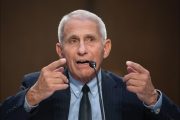EAS was created in 1978 as an outgrowth of airline deregulation — deregulation, like most words, not meaning the same thing in Washington as it does outside the Beltway. Some in Congress believed that airline service to rural areas was so critical that it had to be maintained even if it was unprofitable to airlines; and who better to take on an unprofitable venture — and guarantee its continued unprofitability — than Uncle Sam?
University of California at Berkeley professor Severin Borenstein, one of the designers of EAS, told the AP that “Congress originally intended for the program to end after 10 years.” However, as Ronald Reagan once quipped, “Government programs, once launched, never disappear. Actually, a government bureau is the nearest thing to eternal life we’ll ever see on this earth!”
Thus, 33 years and many economic and demographic changes later, the federal government is still subsidizing every flight out of 153 designated airports, whether or not that flight is carrying any passengers. For airports in relatively populous areas, such as Morgantown, West Virginia, the subsidy comes to just $52 per ticket, while service to three airports — Ely, Nevada; Glendive, Montana; and Alamogordo, New Mexico — is subsidized in excess of $1,000 per ticket. Ely’s subsidy, in fact, comes to a whopping $4,107 per ticket. Since the subsidy is paid as long as the plane takes off, airlines “fly the empty plane so they can still get the money,” Steve Smith, executive director of the Jackson, Tennessee, airport authority, told the AP.
Predictably, over the last 33 years the program “has grown in scope and cost,” the AP reports. “In 1999 the EAS served 89 communities — 68 in the continental United States, one in Hawaii and 20 in Alaska. Today, it serves 45 in Alaska and 108 elsewhere, and over the last 10 years the budget quadrupled from $50 million to $200 million.”
Some Republicans in Congress are seeking to reduce the number of airports receiving subsidies under EAS. “The fight over the subsidies,” the AP explains, “was a key sticking point that led to the recent political standoff in Washington that temporarily shut down the Federal Aviation Administration, putting thousands out of work for nearly two weeks.” In the final agreement, says the news service, “Republicans got the EAS cuts they were looking for … but with a major caveat. Subsidies to Ely, Jackson and 11 other communities are set to end, but Transportation Secretary Ray LaHood has the authority to continue them if he decides it’s necessary.” Now what are the odds that the Obama administration is going to allow these cuts to occur, especially with a presidential election a mere 15 months away?
Of course, every government program, no matter how wasteful or absurd, has its defenders — usually those on the receiving end of Washington’s largess — and EAS is no exception.
For instance, according to the AP:
Faye Malarkey Black, a vice president for the Regional Airline Association, said she believes few federal programs accomplish as much for $200 million as EAS does.
“They call it essential for a reason,” she said. She said her industry group supports “common sense adjustments” for eligibility, but added that rural communities already struggle to attract and keep doctors and other professionals.
“If you take away air service, who wants to live in those communities?” she said.
Those who take advantage of the low fares and the convenience of a nearby airport also stuck up for the program in interviews with the AP. One argued that his family would have to drive 75 miles to the nearest airport to pick him up were it not for EAS, “so it would be terrible to have this go away.” Another complained that “the people in Washington are the types that just think if it’s not in a big area, it’s not worth anything. They don’t know what it’s like here.” Officials in Alamogordo “said number-crunching doesn’t explain the full value of access to air transportation.”
Even in Washington, beset with crippling debt, the program finds fans. One is liberal West Virginia Sen. Jay Rockefeller, a Democrat, who wants to prevent Republicans from cutting subsidies to flights out of Morgantown. Another is his fellow Mountain Stater, Rep. David McKinley. McKinley, a Republican who was elected with significant Tea Party backing and is a member of the Tea Party Caucus, told the AP that he is “a small government, free-market focused owner of a small business”; but — there’s always a “but” — he defended EAS on the basis that airports that receive subsidies “serve as crucial engines of job creation for many small towns and rural areas.”
What all of the program’s defenders fail to recognize is that the jobs that EAS allegedly creates and the convenience it offers to those who live near subsidized airports come at the expense of others. A job created near the Morgantown airport may very well come at the cost of a job near Des Moines; and the latter may be a job generated by individuals’ free choices in the market, while the former is to some degree the result of political maneuvering and coercion.
Furthermore, EAS is patently unconstitutional, regardless of the size of its budget or its supposedly beneficent outcomes. For that reason alone it ought to be abolished, though the economic distortions created by the program are excellent reasons to ground it as well.
Unfortunately, Republicans, with little help from a certain member of the Tea Party Caucus, are only looking to trim the program slightly, not eliminate it — symptomatic of how Washington got into the debt debacle in which it now finds itself. If the GOP gets its wings clipped next November, it need look no further than its approach to this relatively small but emblematic federal boondoggle to explain why.




